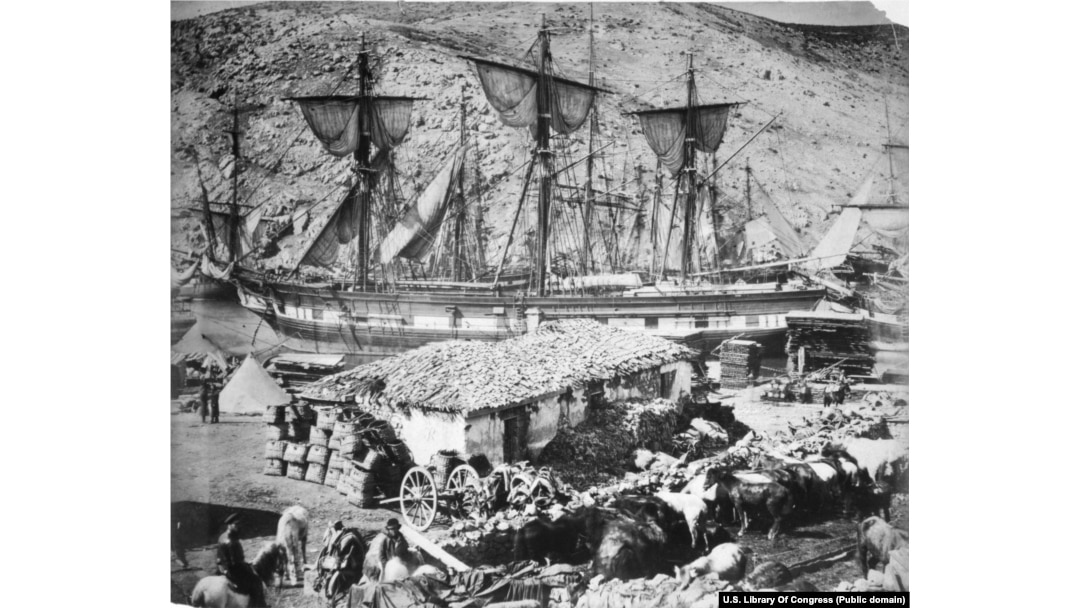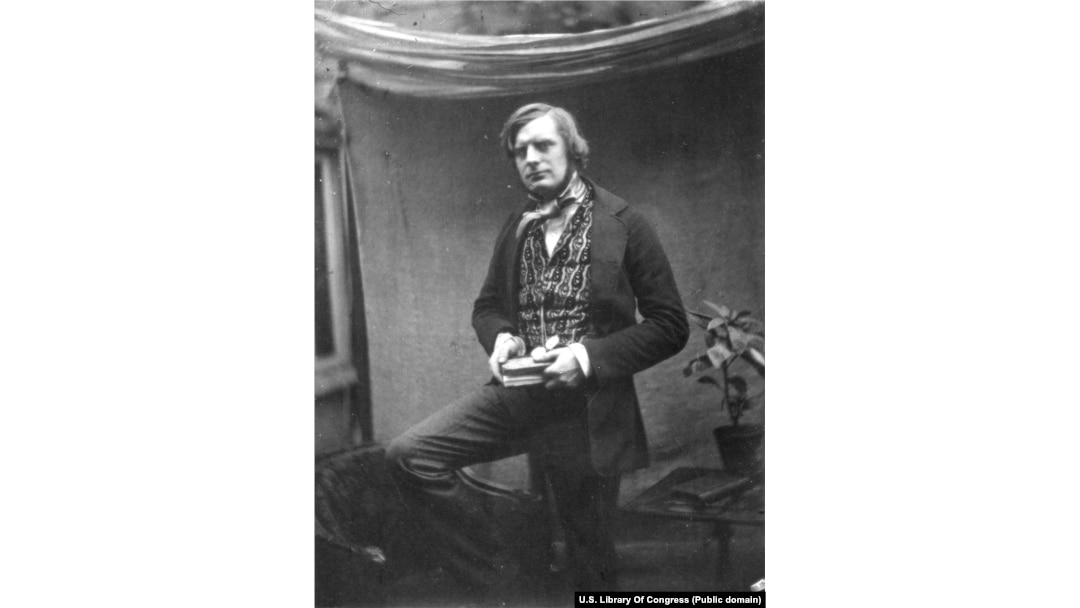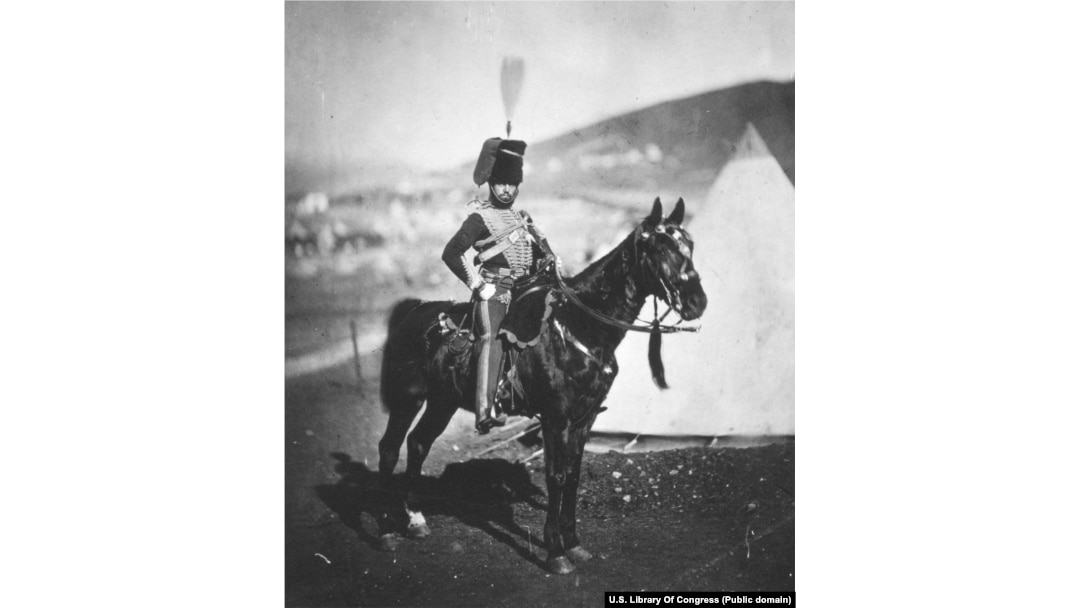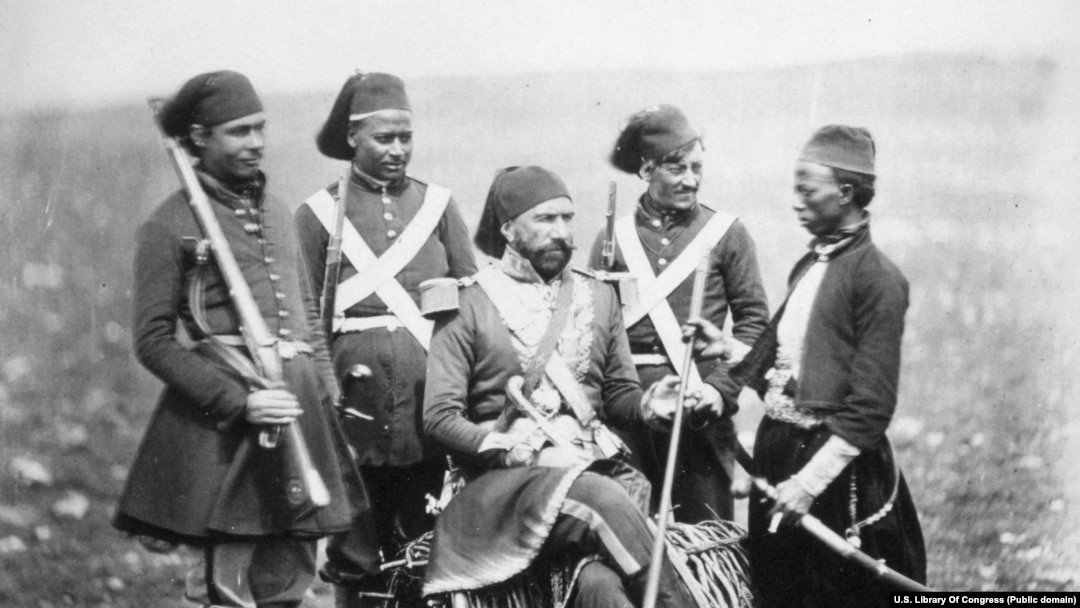When British photographer Roger Fenton stepped off his ship in the port of Balaklava in March 1855, he was confronted with a scene that revealed "a terrible story of bad management."

The harbor in Balaklava
Among an "immense quantity of putrefying matter," wrote Fenton, stood horses so emaciated they were like "mere skeletons with drooping heads and sunken eyes." Out in the harbor the bloated corpses of oxen drifted with the tide and underwater lay "a great quantity of dead bodies, their clothing all wasted away by the water."

Roger Fenton (1819-1869)
In the 360 photos the photographer made in Crimea from March until June 1855, there is little trace of that filth or mismanagement, and no visual record of the gruesome human wreckage left on the battlefields that Fenton witnessed. Instead, the Briton created the following images that are now stored in the U.S. Library Of Congress Archives.
The photos provide a sanitized record of one of the last wars -- before khaki uniforms and steel helmets -- in which soldiers dressed, and died, splendidly.

Henry John Wilkin, an assistant surgeon who survived the famous Charge of the Light Brigade during the Battle of Balaklava
The Crimean War was fought from October 1853 through February 1856. The spark for the conflict was a dispute over whether Orthodox Russia or Catholic France should serve as the official guardian of Christians in the failing Ottoman Empire. Under intense pressure, Constantinople chose France.
A British military camp.
Russia opened hostilities by invading Ottoman territory in today's Moldova and Romania, then devastating the Sultan's navy during a battle on the Black Sea.
Captain Cuninghame, a Scottish infantry soldier
As the Ottoman Empire toppled, Russia saw an opportunity to push southward, while Britain and France both wanted to retain the status quo. British business with the Ottoman Empire was thriving at the time, and Russian expansionism appeared to threaten London's lucrative trade routes to India.
A mortar battery
Russia's southern naval port of Sevastopol on the Crimean Peninsula became the target of the invading Western-led forces and Balaklava, a nearby natural harbor, was chosen as the supply base for the siege of the city.
British soldiers gather around cooking pots
Fenton traveled in the horse-drawn van that can be seen on far left of the above image. The cart served as a bedroom and darkroom for developing his images. He had trialed the vehicle in the British countryside before departing for Crimea.
Gyorgy Kmety (seated), a Hungarian who rose through the ranks of the Ottoman Army under the name Ismail Pasha. The general is photographed with three soldiers and a servant.
Fenton's access to commanders in Crimea was in large part due to his connections in Britain's upper classes. The photographer was born into a wealthy family and had been photographing Britain's royal family before his departure for Crimea. It is likely that access was also dependent on Fenton presenting the war in a positive light for the British public.
"Valley of the Shadow of Death"
The most famous image from his assignment in Crimea was Fenton's "Valley of the Shadow of Death" scattered with cannonballs, some of which were placed neatly on the road to enhance the image.
"The sight passed all imagination," the photographer later wrote of the valley, "round shot and shell lay like a stream at the bottom of the hollow all the way down, you could not walk without treading upon them."
Journalist William Howard Russell
While Fenton's photographs retained a painting-like grandeur, text journalists such as William Howard Russell filed increasingly critical reports back to Britain illustrating how the war was being waged. As fatalities, mostly from disease, climbed into the tens of thousands, public unease with the war began to grow.
Survivors of the Charge of the Light Brigade, in which 110 mounted soldiers were sent to their deaths after a command was misunderstood during the Battle of Balaklava in October 1854
One influential report of Russell's described the Charge of the Light Brigade, in which hundreds of cavalry soldiers were mistakenly sent straight along a valley crowded with Russian sharpshooters into a line of enemy cannons.
"A more fearful spectacle was never witnessed than by those who, without the power to aid, beheld their heroic countrymen rushing to the arms of sudden death," Russell wrote.
"At the distance of 1200 yards the whole line of the enemy belched forth, from thirty iron mouths, a flood of smoke and flame through which hissed the deadly balls. Their flight was marked by instant gaps in our ranks, the dead men and horses, by steeds flying wounded or riderless across the plain."
A distant view of Sevastopol during the siege
Fenton returned to London before Sevastopol was finally captured by the allied forces, effectively ending the war in the summer of 1855.
More than half a million people were killed during the Crimean War, with the vast majority dying from disease.
A peace agreement was reached in which Russia was required to return all of the Ottoman and Moldavian territory they had seized, while the British and French-led alliance returned the Russian land it had captured during the war, including Sevastopol and Balaklava. Both the Russian tsar and the Ottoman sultan agreed not to establish any naval or military arsenal on the Black Sea coast.


